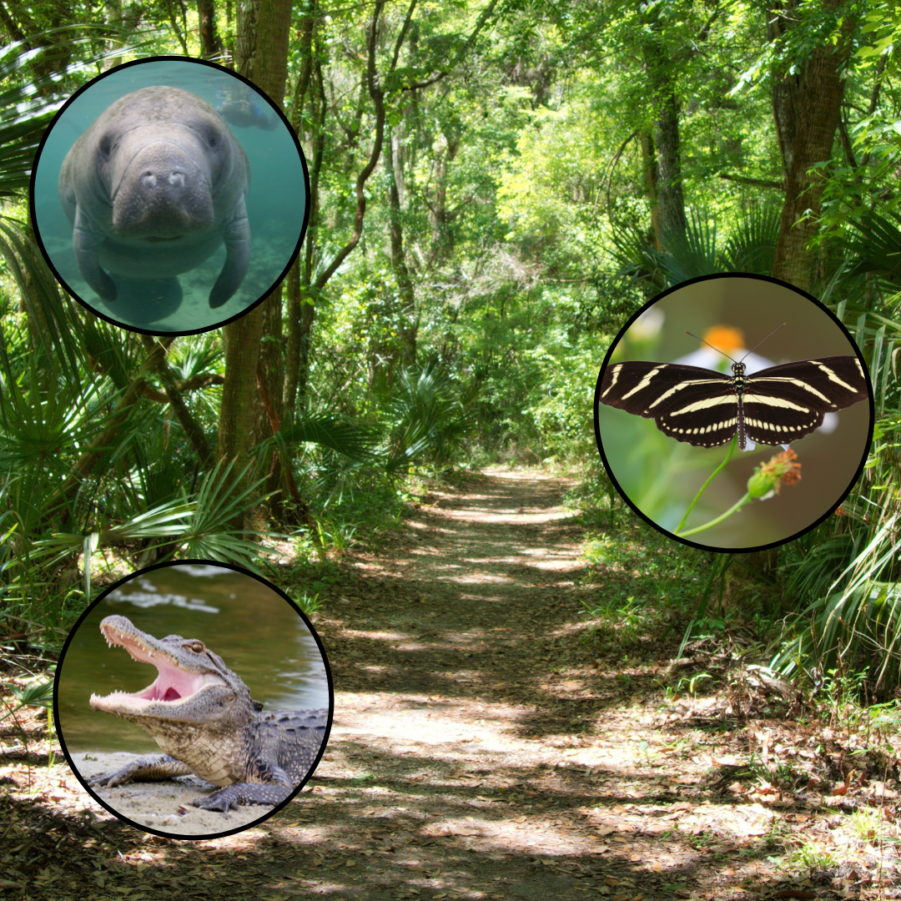One of the most important ways to get to know nature is to witness its many forms in different parts of the world. Because of this, I encourage readers to check out nature in their own neck of the woods, but also to include nature in their itineraries for any trip further afield. The United States is an incredible place for outdoor adventures. Between its many National Parks and huge variety of biomes, the possibilities are endless! Among America’s many natural treasures, the nature in Florida is not to be missed.
This state hosts a variety of subtropical environments and the unique wildlife that depend on them. From stately swamps and winding rivers and wide prairies, Florida boasts many gorgeous settings for connecting and learning about your natural world.
Whether you’re already planning a trip to the Sunshine state, or looking for your next travel destination, it’s worth knowing what wonders Florida has to offer. In this Outdoor Tips and Travel post, I’ll introduce you to some amazing nature destinations in Florida and some of the great wildlife that lives there.
Since this is a big state, we’ll review natural areas among the main regions of Florida. Proceeding North to South (and West to East), we’ll divide Florida into five regions:
- The Panhandle
- North Florida
- The Gulf (West) Coast
- The Atlantic (East) Coast
- South Florida
Each region has their own nature specialties based on their soil type, rainfall, latitude, and so on. If you’re curious what makes the nature in these places so different, check out my posts on natural spaces and elevation. Let’s explore!
The Panhandle
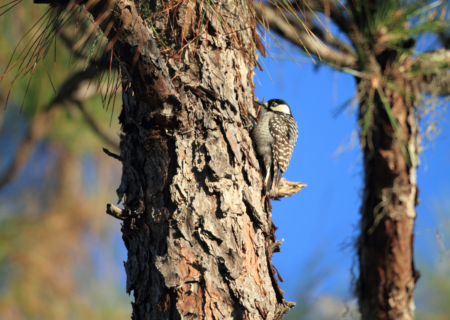
Florida’s Northwest corner has some of the largest undeveloped tracts of land in the state. It is also some of the most forested land, and is considered a hotspot for biodiversity. The panhandle is home to the great Choctawhatchee and Apalachicola rivers, which paint a winding swath of wetland habitats across the landscape. Among the special habitats to be found are:
- Longleaf pine savannah
- Limestone karst bogs
- Rivers, backwaters and floodplains
What about wildlife? Some of the major highlights include:
- Dozens of endemic river fish
- Florida black bear (Ursus americanus floridanus)
- Florida panther (Puma concolor coryi)
- Nine-banded armadillo (Dasypus novemcinctus)
- White-tailed deer (Odocoileus virginianus)
So what are the top places for seeing nature in the Florida panhandle?
1. Apalachicola National Forest
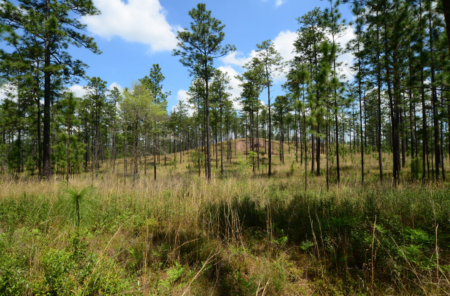
Apalachicola National Forest is a huge expanse of longleaf pine forest dotted with limestone springs, creeks, and wetlands. The Florida National Scenic Trail, a statewide equivalent of the famous Appalachian trail, runs through it and makes for fantastic hiking. Apalachicola is worth a visit for anyone interested in the terrestrial wildlife of the panhandle and features loads of excellent hiking spots. A close friend of mine and avid hiker who walked the entire Florida trail shared some of their most enchanting photos from their trek through this area.
The forest supports some of the last large stretches of the original habitats of North Florida, so it also supports any rare and endangered species. These include:
- Red-cockaded woodpecker (Leuconotopicus borealis)
- Eastern indigo snake (Drymarchon couperi), my favorite snake species in North America
- Flatwoods dusky salamander (Ambystoma cingulatum)
- Gopher frog (Lithobates capito)
- Barbour’s map turtle (Graptemys barbouri)
2. Camp Helen State Park
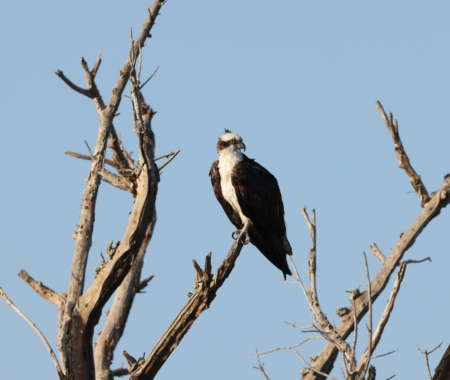
Camp Helen State Park encompasses beautiful coastal dunes where huge amounts of sand support unique habitats. Loads of aquatic raptors like Osprey (Pandion haliaetus) and Bald eagles (Haliaeetus leucocephalus) frequent the area, along with a great selection of gulls and shorebirds depending on the season. Sandy dune habitats are especially rare in the Eastern U.S., so many of the local plants are rare and hard to find elsewhere.
The park is part of the Great Florida Birding and Wildlife Trail, making it a prime spot for birdwatching. Oak forests in the dunes and around marsh habitats provide a shady canopy for comfortable hiking throughout the day, and the nearby waters are excellent for kayaking. Beyond the natural appeal, Camp Helen is also home to historic buildings and gorgeous vistas. Plenty of people head there for non-nature activities; it’s a popular destination for weddings as well!
3. St. Marks National Wildlife Refuge

This wildlife refuge was established specifically to provide wintering habitat for migratory birds. Florida’s warmer coastal habitats make excellent overwintering and refueling stops for birds heading South to avoid harsh Winter weather. St. Marks National Wildlife Refuge lies at a key point on the Eastern Flyway, and can be a major thoroughfare for many interesting birds during Spring and Fall migrations.
The refuge hosts marshes, tidal flats, and coastal woodlands. This variety of habitats can greatly increase the number of bird species that you can spot in a day of birdwatching. Want to learn more about birdwatching, or pick up equipment to get to know our feathered friends? Check out my posts on beginner birdwatching tips and choosing a pair of binoculars.
For history buffs, St. Marks also hosts a lighthouse by the same name. The Friends of St. Marks Refuge have prepared a lot of excellent materials for learning more about its history. Like some other coastal Florida parks, it’s a great destination for paddling as well as tramping around. A large portion of the refuge is designated wilderness area, meaning that motor vehicles are prohibited, and ensuring a more peaceful natural setting.
4. Blackwater River State Park
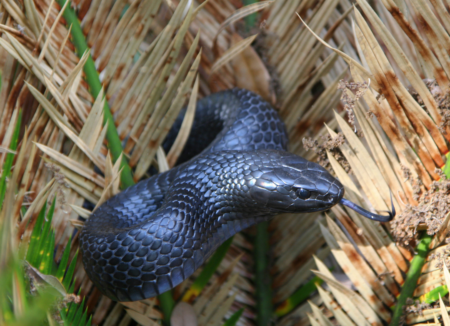
Blackwater River is named for its dark, tea-colored waters, which get their strong tint from tannins in the hardwood leaves falling from its forested canopy. Slow-moving, swampy habitats like these are a iconic and distinctive examples of the biome associated with the American Southeast. The river flows through the largest remaining longleaf pine-wiregrass savannah ecosystem left on Earth. This important habitat, rich in local and endemic biodiversity, was once found throughout the American South, but has been decimated by development. In particular, one of its greatest threats is the suppression of naturally-occurring fire, an important source of ecological disturbance. By maintaining fire on this landscape, Florida’s park system supports rare wildlife species.
Potential wildlife sightings in this carefully managed habitat include:
- Eastern indigo snake (Drymachon couperi)
- Frosted elfin butterfly (Callophrys irus), another endangered species
- Gopher tortoise (Gopherus polyphemus)
Florida’s fantastic Blackwater River State Park offers a huge expanse of this rare and impressive habitat, with access for canoeing, camping, and hiking. The park boasts some fantastic nature trails, and weather is excellent for nature tourism year-round. Check out the Florida State Parks website to book your visit!
North Florida
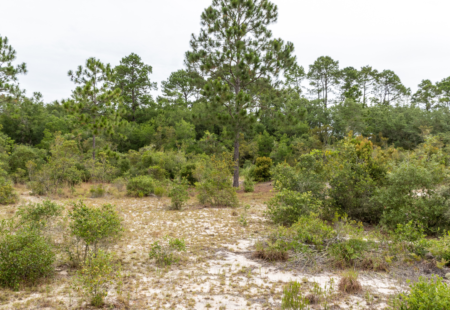
Home to cities like Gainesville and Jacksonville and subject to occasional cold weather, North Florida is a bit of a mix for nature tourism. Spanish moss (Tillandsia usneoides) and palmetto (Sabal palmetto) give an increasing impression of a more tropical climate, but many plants from further North still predominate. Similar to the panhandle, you’ll find a mix of cool subtropical habitats in this part of the state:
- Mid-elevation flatwoods
- Baygall wetlands
- Cypress swamps
- Sandhill
The proximity of so many of these great habitats to fantastic destinations like the University of Florida make this region even more attractive. Even if you’re on your way to further Southern parts of the state (Disneyland, anyone??) a stop in North Florida is well worth it.
5. Paynes Prairie Preserve State Park
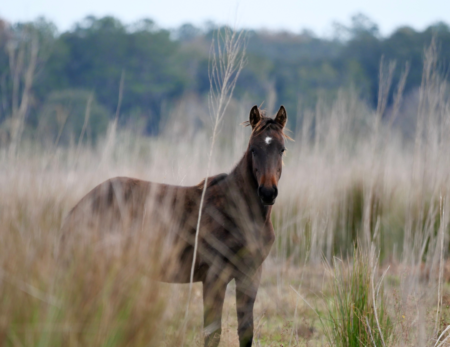
Of all the natural spaces I have visited in North Florida, Paynes Prairie made the biggest impression on me. It’s just not what I expected when I thought about nature in Florida, and it was a beautiful and serene surprise. With several entry points just a short distance from Gainesville, it’s an easy place to reach. Furthermore, the prairie hosts fantastic nature trails and unexpectedly huge, open environments. In terms of wildlife watching, my favorite sightings were:
- Snail kite (Rostrhamus sociabilis), an endangered species in the U.S.
- Black-and-white warblers (Mniotilta varia), during Fall migration
- American bison (Bison bison), yup, you read that right!
- Limpkin (Aramus guarauna), the first one I had ever seen, and they were all over the place. A weird, very unique, and entertaining bird to watch.
There were also loads of waterbirds and very cool butterfly species, even during my late Fall/Winter visit. The prairies are actually seasonal wetlands, kind of like giant, flat vernal pools that are only wet for part of the year. Because of this, Paynes prairie is excellent grazing land, which is why American bison were re-introduced by the U.S. Fish and Wildlife Service in 1975. Furthermore, the prairies are also home to wild horses, likely descended from those brought there by Spanish explorers in the 16th century.
6. Sweetwater Wetlands State Park
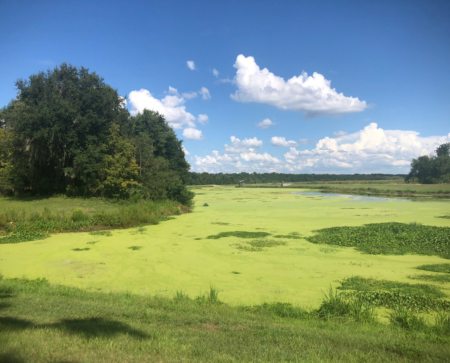
Sweetwater is a fascinating example of artificial nature in Florida. What do I mean by that? Well, this premier birdwatching spot is made up ofconstructed wetlands. The state built these wetlands to clean up stormwater flowing out of urban areas and into Paynes Prairie. In effect, the wetlands act like giant natural filters, removing potentially harmful nutrients and toxic chemicals before they can get downstream. If you want to learn more about all the great things wetland do for us, check out this post!
These wetlands are another short skip outside of downtown Gainesville, and are an easy stop on a trip through the area. My first visit afforded a mindblowing assortment of great waterbirds, including one of my personal favorites, the Common gallinule (Gallinula galeata). There are also lots of American alligators (Alligator mississippiensis) in the area, so I don’t recommend going for a swim! With some easy trails and shaded wildlife viewing areas, it’s a quick and rewarding trip for birdwatching or enjoying a quiet moment outside.
7. Twin Rivers State Forest
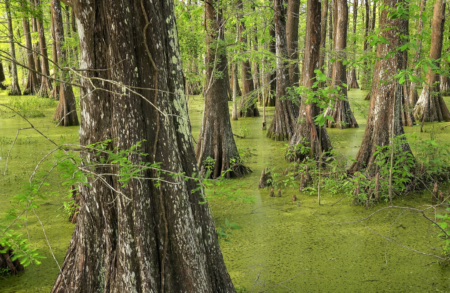
Twin Rivers State Forest surrounds confluence of the Withlacoochee and Suwannee Rivers just South of the Georgia border. This is a premier hiking and camping area for experiencing Florida’s subtropical, semi-temperate woodlands. It is part of the Florida National Scenic Trail, with miles of trail linking campsites and recreation areas and a wildlife management area. Rather than being a single, contiguous reserve, Twin Rivers is an archipelago of connected locations on separate tracts of land.
While any one of the smaller areas along the state forest are worth a visit for casual recreation, this area is a great hiking destination with over 14 miles of trails. Cypress swamps along the riverbanks are excellent habitat for birds like prothonotary warblers (Protonotaria citrea) and barred owls (Strix varia). The park’s hardwood hammocks harbor an array of plant species, including the rare Florida yew (Taxus floridana).
The Gulf Coast
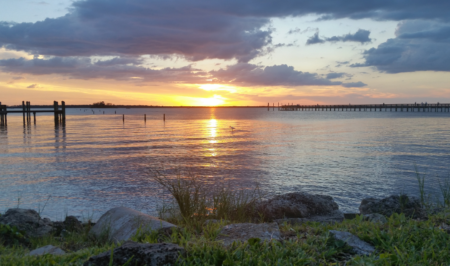
The Gulf gives an entirely different look at nature in Florida, showing more of its tropical side. Warmer, milder waters support different sea life than the Atlantic coast, supporting rare habitats like seagrass beds. With big destination cities like Tampa, St. Petersburg, and Fort Meyers, Florida’s West Coast is highly developed. However, this means that the natural areas that have been protected and preserved there are easily accessible and especially important.
The gulf coast is home to some of the most iconic examples of nature in Florida, including manatees (Trichechus manatus) and bottlenose dolphins (Tursiops sp.). I’ve reliably (and always unexpectedly!) spotted dolphins during just about every visit I’ve taken to the gulf. At certain times of year, manatees are also surprisingly common, if you know where to look.
Warm waters mean great opportunities for wading, swimming, fishing, and snorkeling. Taking a casual dip during a quick visit in 2011, I was treated to my first ever sighting of a pipefish (Syngnathus scoveli), an iconic and unexpected animal sighting. So if you’re visiting Florida’s West coast, don’t miss out on these great nature spots!
8. Ding Darling National Wildlife Refuge
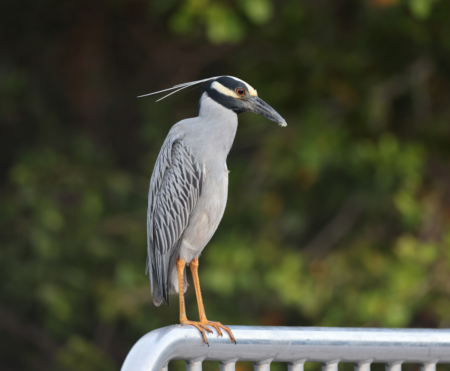
Ding Darling is one of the most famous areas in America’s National Wildlife Refuge System, and with good reason. This gorgeous subtropical protected area on Florida’s Sanibel Island is a haven for migratory birds in winter, and wading birds year-round. Ding Darling NWR makes wildlife viewing accessible for all, with a Wildlife Drive that’s easy to traverse by car or bicycle. Furthermore, it’s easy to explore by canoe or through a number of excellent walking trails. Importantly, the refuge has a fantastic (and free!) visitor center with lots of great staff and signage to teach you about the local nature.
Ding Darling is a great place to explore mangrove forest, a unique tropical ecosystem that protects our coastlines. At certain times of year, it’s also a great place to spot manatees and other ocean life. For the inside scoop on this fantastic place, check out the Nature Guys podcast episode with a ranger at Ding Darling:
9. Myakka River State Park
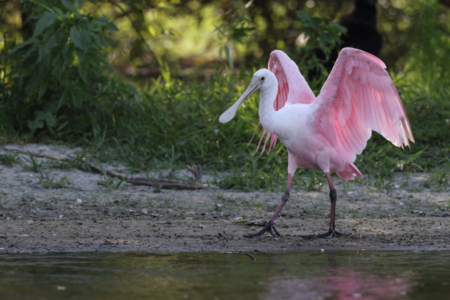
Myakka River State Park is a large inland reserve just inland from Sarasota. Among its key attractions are extensive wetlands like Upper Myakka Lake, where you can spot alligators, river otters (Lontra canadensis) and a fantastic assortment of wading and waterbirds. The forested hammocks, with their towering live oaks, are habitats for Florida panther (Puma concolor coryi) and Painted buntings (Passerina ciris), in my opinion one of the most dazzling birds in North America.
The Myakka Canopy Walkway and observation tower offers a bird’s-eye view of the surrounding forest. This can be a great way to get the lay of the land. In an area with such flat topography, a little elevation goes a long way for dramatic views! Myakka River State Park also features campsites, spots for alligator watching, and some great walking trails.
10. Crystal River Preserve State Park
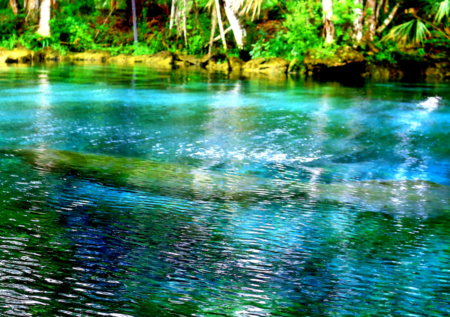
Crystal River Preserve State Park, where coastal and aquatic habitats converge, is renowned for its warm springs and diverse wildlife. Manatees seek refuge in the springs during the winter months, providing a unique opportunity for close encounters. The park’s islands, including the Dogwood Island Trail, offer nesting grounds for seabirds like brown pelicans and ospreys. The coastal marshes provide habitat for the endangered wood stork and other wading birds. Guided paddle trips through the park’s intricate waterways unveil the rich biodiversity, from bottlenose dolphins to diamondback terrapins (Malaclemys terrapin).
The East Coast
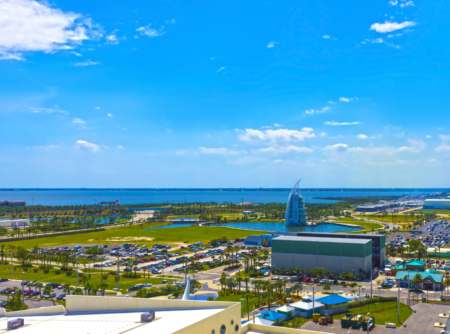
Florida’s East Coast is home to some of the biggest destination cities, including Daytona Beach, Orlando, and Melbourne. Also known as the Space Coast, this area is the home of Cape Canaveral and the Kennedy Space Center. Facing into the Atlantic, this Central portion of the state has loads of inland wetlands as well as barrier islands supporting unique coastal habitats. The flat, wide expanses of the coastal plain are home to huge lakes and scattered smaller ponds beyond counting. Some large military bases also protect great areas of undeveloped habitat supporting native species.
11. Ocala National Forest
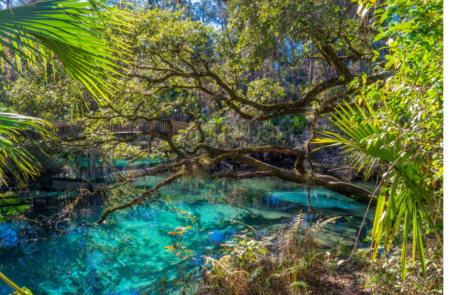
Accessible from the East Coast but smack in the middle of Florida is the Ocala National Forest. This huge (>600 square miles / 1500 km²) reserve, South of Gainesville and West of Orlando, features a mix of lowland scrub, sandhill, and pine forest stretched between two large rivers. The forest is one of the few large tracts of Florida scrub remaining in the state, a habitat type that has mostly been lost to development. It is home to rare species like the Florida scrub jay.
The landscape is dotted with lakes, ponds, and marshes, providing a variety of forest habitats ranging from dryland conifer forests to baldcypress (Taxodium distichum) swamps. This huge landscape has loads of hiking and camping opportunities managed by the U.S. Forest Service. The Florida National Scenic Trail, the sunshine state’s version of the Appalachian trail, also runs through it. As in the panhandle, Ocala also includes several wilderness areas if you’re after a particularly pristine experience with nature in Florida.
I’ve heard from Florida naturalist friends that the freshwater springs dotting the forest are one of its best attractions. The clean, cool water often shaded by huge old-growth trees can be a great break from the Florida heat. The forest also has a great visitor’s center with ample educational signage to learn more about the area and its natural and cultural history.
12. Merritt Island National Wildlife Refuge

Merritt Island is another crown jewel of the United States National Wildlife Refuge System. It encompasses protected coastal wetland areas on the barrier island occupied by Cape Canaveral. The refuge boasts a huge triangular road, the Max Brewer Memorial Parkway, which grants access to all corners of the island. There are further drives to reach popular beaches and well-marked trails through the marshes and mangroves. As you might have guessed for a barrier island, the birdwatching in the area is top notch. There are ducks and other waterbirds galore, and waders and larger fish-eating birds are a frequent sight throughout the day.
Among the trails, the Scrub Ridge Trail is a particular highlight, in that it provides access to drier upland habitats. These scrublands support the increasingly rare Florida Scrub Jay (Aphelocoma caerulescens), a bird that holds a special place in my heart. These brainy, highly social birds were one of the first species that I ever studied in the wild!
13. Kissimmee Prairie Preserve State Park
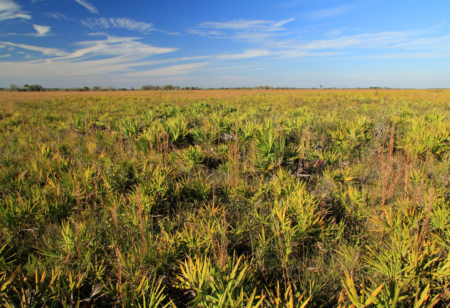
Kisssimmee Prairie Preserve offers a change of pace from Florida’s wetland-heavy natural areas. The state park preserves a huge expanse of dry prairie, one of the rarest habitat types in the region. As you might guess, this means some particularly uncommon wildlife species. Among the most exciting:
- Florida grasshopper sparrow (Ammodramus savannarum floridanus), an endemic and Federally endangered species.
- Crested Caracara (Caracara plancus), a uniquely handsome, dinosaur-like scavenging raptor.
- Burrowing owls (Athene cunicularia), adorable and unique little owls that live like prairie dogs.
- Manyflowered grasspink (Calopogon multiflorus) a rare, fire-dependent wildflower.
Kissimmee Prairie Preserve also a recognized Dark Sky Place, offering a night-time view of the cosmos that is increasingly rare nowadays. Taking advantage of one of the many available campsites could lead to magnificent views of the stars from our little corner of the galaxy! Camping options range from primitive trail sites to more comfortable accommodations for car-camping.
The preserve features both paved, accessible trails and rougher hiking including a portion of the Florida Trail. At certain times of year, a walk along the trail can yield an absolute botanical paradise of blazing stars (Liatris sp.) and many other unique and colorful wildflowers.
South Florida
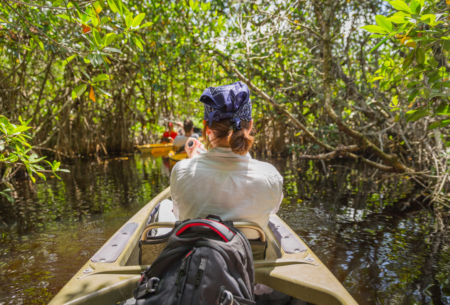
The Southern part of the state is where the nature in Florida becomes the most distinctive. South Florida supports some of the only tropical ecosystems in the United States and has the wildlife to prove it. Here, the massive Everglades ecosystem, one of the world’s most famous wetlands, runs into mangroves along the coast. The warmer and less seasonal climate in this part of the state means that it is the Northernmost frontier for many tropical species. The uniqueness and intense tropical beauty of South Florida and the surrounding coast justified the establishment of the Sunshine State’s three national park. Check them out below! Looking for tips for visiting America’s national parks? Have a look at this handy guide to national park trips.
14. Everglades National Park

Everglades National Park is perhaps the most iconic nature preserve in Florida. This huge, wet landscape is a UNESCO World Heritage Site and part of the International Biosphere Reserve, both testament to its ecological uniqueness and importance. Like any other U.S. National Park, it’s filled with accessible trails and boardwalks and a variety of recreational opportunities.
Especially during the wetter season, there are tons of opportunities for canoeing, kayaking, and touring by airboat. The park’s main entry road is peppered with great little spots to launch canoes or kayaks for multi-day trips. Out in a quiet boat, it’s not uncommon to spot nesting waterbirds, alligators, turtles, and manatees.

The park has several visitors centers with great information on park wildlife and its unique ecology and hydrology. The trail system is also fantastic, ranging from easy boardwalks with ample signage to rougher trails that get you out to overlooks and deeper into the wildness of the landscape.
During a quick winter visit in 2023, I was treated to fantastic wildlife encounters like migrating warblers, busy wading birds, and amorous manatees. Even during this “off-season”, there were gorgeous plants galore, including mangroves, baldcypress, and many airplants or epiphytes.
15. Biscayne National Park
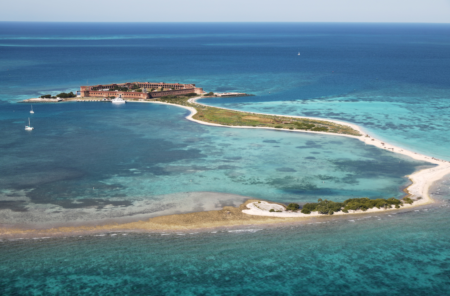
Biscayne National Park protects a gorgeous stretch of coastal area around Biscayne Bay, and shows off a very different side of nature in Florida. The park is an easy hop from Miami, if you’re looking to add some gorgeous nature to your itinerary. The park includes several barrier islands and their corresponding coastline, as well as a marine zone around them.
This tropical marine paradise features shipwrecks, coral reefs, manatees, sharks, and diverse wildlife easily visible through the shallow, clear water. Unlike many other national parks, it is less accessible for driving and hiking, and will require some boat travel to see all that it has to offer. The only access to the park on the Florida mainland is via the Fascell Visitor Center.

Snorkeling tours are a fantastic way to see the park, and it features a Maritime Heritage Trail that passes through six shipwrecks and a diversity of marine habitats. Caribbean spiny lobsters (Panulirus argus), an iconic tropical species, are easily visible during such an underwater tour.
Boat tours of various parts of the park are available through a variety of vendors, and are an easy way to access the offshore islands in the park. you can camp on the keys with the right permits and access, although I recommend doing this only during Winter months to avoid mosquitoes. Elliot Key and Boca Chita Key are two of the most popular islands.
Kayaks and paddleboards are additional great options for navigating the comfortable and colorful water within the park. Sea turtles nest on sandy beaches around the keys and coast, and American crocodiles (Crocodylus acutus) roam the waters in small numbers.
16. Dry Tortugas National Park
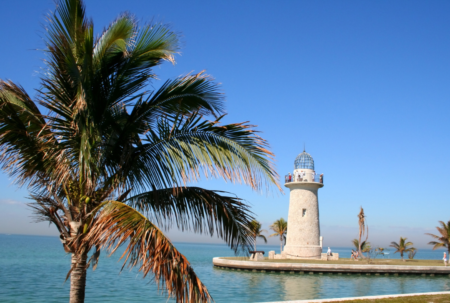
Like Biscayne, Dry Tortugas National Park is close to a major Florida vacation destination, in this case Key West. Also like Biscayne, Dry Tortugas is a doorway to the “salt life” version of nature in Florida. It consists of seven main islands or keys. This archipelago is home to gorgeous patches of coral reef and the many tropical and subtropical fishes that call them home. Snorkeling and diving tours are a fantastic way to explore the park’s extensive marine habitats.
The biggest barrier to visiting Dry Tortugas is accessibility. The park is not part of the Florida mainland, nor is it accessible by car. Visitors need to arrive by boat or plane, but visits are relatively straightforward from Key West. On a related note, it’s important to know that visitors are expected to bring their own food, water and supplies for their visit.
For birdwatchers, the parks major claim to fame are nesting seabirds. To name a few:
- Sooty tern (Onychoprion fuscatus)
- Magnificent frigatebird (Fregata magnificens)
- Masked booby (Sula dactylatra)
- Bridled tern (Onychoprion anaethetus)
The park is also a great stopover and overwintering site for cool migratory birds, including many dazzling New-world warblers (family Parulidae).
Dry Tortugas also has plenty of cool human history, including Fort Jefferson, an old naval fort on Garden Key. This historical structure was constructed to protect valuable shipping ports, and is the largest brick-made structure in the Americas. For land-based nature recreation, Garden key has a primitive campground and a loop path to see the island.
Thanks for reading about nature in Florida!
Now you’re ready to see the best of nature in Florida, whether that’s the sole reason for your visit or if you’re tacking it onto a Winter getaway. Do you have other favorite Florida nature destinations that we should make sure to include? Let us know in the comments! If you enjoyed this post, please share it with friends and follow us on Social Media. If you’d like to get in touch directly, don’t hesitate to reach out using the Contact Page. We’d love to hear from you!

